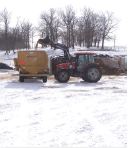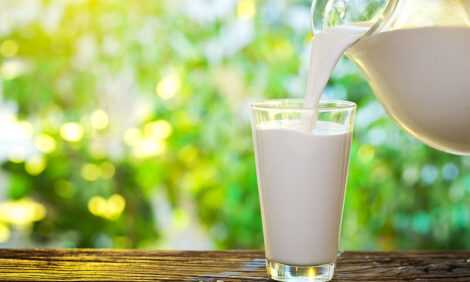



Silage Shrinkage: What Does the Data Say?
Minimizing silage shrinkage could save over $10,000 of lost forage a year on a 100 cow family farm, according to an Virginia State University expert.Gonzalo Ferreira, dairy scientist at Virginia Cooperative Extension has urged farmers that 0 per cent shrinkage is possible and that more than half is linked to the action of delivery, package, seepage, removal and invisible losses.
Total silage shrinkage is defined as the difference between the amount of forage delivered and packed in the silo and the amount of forage actually fed to the animals, explains Mr Ferreira. There are five main components of total silage shrinkage:
- Losses during forage delivery and packing
- Losses linked to the respiration, fermentation and oxidation processes (i.e., invisible losses)
- Losses due to seepage
- Losses due to silage spoilage
- Losses during the feed out process.

Total silage shrinkage has a substantial negative impact on net incomes of dairy farmers. For example, assuming a corn price of $5.30 per bushel, a corn field yielding 20 ton/acre (as fed basis) with a 33 per cent dry matter concentration would result in a corn silage cost before shrinkage of about $40 per ton of silage.
*
"For a 100-milking cow dairy
with its replacements, this difference in
shrinkages may imply an economic loss of
$13,795 per year."
Considering a 10 and 25 per cent total silage shrinkage the final cost of the fed silage will be $48 and $57, respectively. For a 100-milking cow dairy with its replacements, this difference in shrinkages may imply an economic loss of $13,795 per year.
The question farmers may frequently ask is how much shrinkage should they expect for their silage. A study from the Dairy Forage Research Center in Wisconsin (Martin et al., 2004) measured shrinkage from 24 silo bags and observed that total shrinkage ranged from 0 to 39.9 per cent , with an average of 16.4 per cent .
Total shrinkage from the worst six bags (25 per cent of the bags) ranged from 25.9 to 39.9 per cent. The interesting observation from this study is that spoilage losses accounted less than half of the total losses (6.9 per cent on average).
This means that more than 50 per cent of total shrinkage is linked to the operative processes (i.e., forage delivery, packing and removal), seepage and the invisible losses. Knowing that total silage shrinkage can be substantial, it is important to consider some factors affecting silage shrinkage:
- Dry matter (DM) concentration. Silages with more than 40 per cent DM usually have the greatest silage shrinkage due to invisible losses (i.e., oxidation). Silages with less than 25 per cent usually have the greatest silage shrinkage due to seepage.
- Silo type. Bunker silos have greater silage shrinkage than silo bags, and these have greater silage shrinkage than tower silos.
- Packing density. Silage shrinkage is inversely related to packing density (i.e., more density implies less shrinkage).
- Silo maintenance. Keeping the silo well covered and sealed is crucial to minimize silage shrinkage.
- Inoculants. Evaluate the use of inoculants to minimize silage shrinkage.
- Feedout rate. A minimum of 8 inches of the silo face should be extracted to minimize silage shrinkage.
In summary, there are many forage best management practices that farmers should consider to minimize total silage shrinkage, and therefore increase net farm income.


